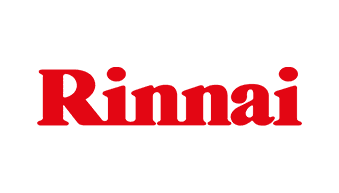
How Can You Fix a Leaking Roof?
We all love the sound of rain, it’s therapeutic. However, the last thing we want this winter is a leaking roof disrupting plans.
Water leakage can quickly become a major issue, from water stains, mould and rot to serious property damage.
The good news is there are several indicators and obvious signs of a leaking roof, and some simple solutions to prevent disaster.
How Can I Tell if My Roof is Leaking?
Perhaps memories of an ugly mould stain from your first share house still haunt you to this day. Not only is mould a sign of a water leak, but long term exposure to mould can impact your health.
Ceiling stains are a clear-cut sign of a roof leak, and in a bad case will be followed by an actual drip if left too long.
Outside you would see moss or algae on the exterior walls. Which may be a quirky feature, but it’s certainly not the natural, eco-friendly look you should go for.
What Causes a Leaky Roof?
Let’s explore some of the more common causes of roof leaks.
There are two places water will come from – roof pipes which always have the potential to break down, or wind driven rain breaching the roof cavity and causing a roof leak.
Depending on the age of your property, natural deterioration of roof tiles or sheeting may make small holes or gaps begin to appear. Roofing gaps, cracked, or missing tiles, or flashing imperfections could all allow for a leak.
Blocked gutters lead to a build-up of water, which has to go somewhere. It’s a bad sign if you see an overflow from your gutters, or nothing coming out of the downpipe during a downpour because water has to go somewhere and will likely find a way inside.
Immediate Actions for a Leaking Roof
When your roof starts leaking, you must take immediate action to prevent further damage.
Start by moving any furniture and electronics out of harm’s way to prevent water damage. Inspect your attic or ceiling cavity if safe to do so; this can give you an insight into the extent of the leak. Small leaks may not require instant professional help and can sometimes be contained with a temporary fix, such as applying roofing cement with a putty knife, which you can find at most hardware stores. Always remember that these are short-term solutions for roof leaks. For a durable and lasting repair solution, you should consult roofing professionals.

Understanding the Impact of Heavy Rain on Roof Leaks
Heavy rain can exacerbate existing weak spots in your roof, leading to leaks.
It’s essential to check areas such as the flashing, vent boot, and step flashing. These are common entry points for water in leaky roofs. In the case of tile roofs, including concrete roof tiles and slate, damage such as broken tiles or compromised ridge capping can allow rain to infiltrate.
For those with metal roofs, a roofing professional will ensure that all screw holes are sealed and that the metal sheets are installed properly. Regular inspections, especially after a heavy downpour, can save you from the headache of dealing with a roof leak.
How to Prevent Roof Leaks
The simplest step is an annual gutter clean. Removing leaves and debris will allow the water to flow freely and save you future worries. Gutter guards can help if you have a lot of trees surrounding your property and simply can’t keep up with the constant cleaning.
If you have any issues with a blocked downpipe or blocked stormwater drain, don’t fret, contact us today and we can send a plumber out.
Attempting a DIY job as an early fix can prevent some damage, however, it may not fix or replace everything.
That’s where Metropolitan Plumbing can come in! We specialise in leaking roofs, roof repairs and roof plumbing. Our technicians provide a full examination and long term solutions, not just a temporary patch job.
Choosing the Right Materials for Repair and Replacement
When it comes to fixing a leaky roof, the quality of materials that you use can make all the difference.
- For tile roofs, ensure you use matching concrete roof tiles or clay tiles that meet the standards for your climate.
- Got a metal roof? Choosing the right type of metal and ensuring it is coated correctly for weather resistance is key.
- If your flat roof is leaking, roofing professionals might recommended materials like EPDM or TPO for their durability and effectiveness in sealing against water.
Always opt for high-quality materials that will withstand the elements and provide long-term solutions to roof leaks.
Long-Term Solutions for Roof Leaks
Consider a full roof inspection as a means of ensuring your leaking roof is comprehensively fixed. Roofing experts can identify and repair problematic areas such as damaged shingles, inadequate roof sheathing, and improper roof penetrations. If your tiled roof or flat roof has seen better days, it might be time to discuss a new roof with your insurance company. In the interim, keeping gutters clear of leaf debris and ensuring downpipes are not blocked can mitigate immediate risks.
Remember, fixing a small leak promptly can prevent it from becoming a big problem that leads to significant water damage and the need for an entire roof repair or replacement.
What To Do in a Roof Leak Emergency
What if a roof plumbing disaster hits and an unwanted pool starts forming in the dining room? Not to mention the growing water stain on the ceiling?
When you find yourself suddenly dealing with a roof leak, immediate attention matters. Metropolitan Plumbing operates 24/7 and we can have a plumber at your door within an hour* of your call, for ease of mind with any plumbing emergency repairs.
With a range of interest free** payment plans available to eligible customers, you won’t have to worry about upfront, unexpected costs either.
While you wait, limit the damage by placing a bucket under the leak to catch water. Surround the area with towels as well.
Please note: This information is provided for advice purposes only. Regulations differ from state to state, so please consult your local authorities or an industry professional before proceeding with any work. See our Terms & Conditions here.
Published: 2020-06-02

















